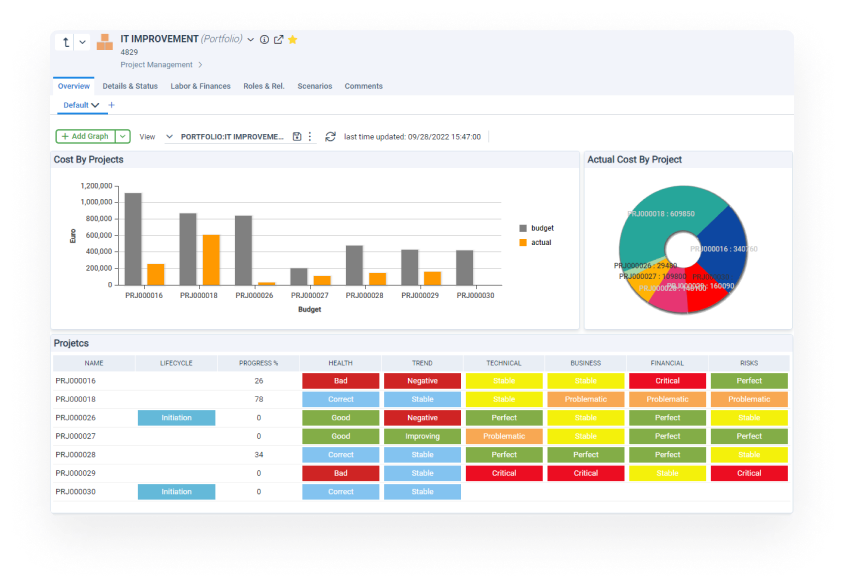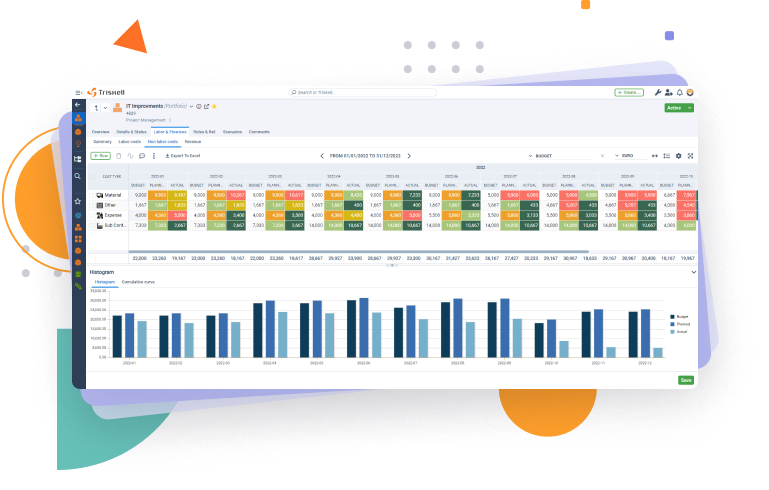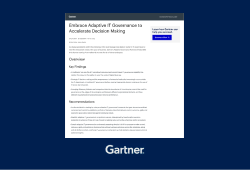
10 types of Project Management Offices (PMO): structure, purpose and how to choose the right one
Learn about different PMO types, their governance levels, and which one is the best fit for your company’s project management needs.

One of the biggest objectives of a PMO can be summarized in this statement: “You have to put the focus on delivering value”.
This is a statement that you, as the person in charge of the PMO or the IT teams in your organization, have probably heard constantly from company executives. This is the great challenge faced by Project Management Offices at present: to manage an IT and Project portfolio that must, on the one hand, be aligned with the strategic objectives of the organization. And, on the other hand, to satisfy the needs of customers and users who are increasingly demanding in terms of the products and services they consume.
And, when that doesn’t happen, you know what the consequences are. Unhappy customers, executives and stakeholders who ask for an explanation for excessive costs incurred on projects that are irrelevant to the organization, teams that are unmotivated and disconnected from the reality of the company and the customer, etc. Do you want to turn this picture around and make your organization’s portfolio focus on delivering value? In this article, we explain how to accomplish this in just 5 steps.
Value delivery is by no means an unfamiliar concept for the IT teams or portfolio managers. It’s an idea that is constantly repeated in methodologies such as ITIL or PMBOK. Value delivery is one of ITIL’s guiding principles, on which this conglomerate of principles and best practices that every IT product and service manager must follow is based.
This guiding principle, which is called “Focus on Value“, emphasizes the importance of linking all activities within the organization to the delivery of value. This value can be reflected in various ways, such as higher customer satisfaction, increased revenue, opening up new markets or customer segments, cost optimization, increased productivity, etc.

PMO MANAGEMENT
Empower your PMO to achieve
business goals
See how PMOs can leverage Triskell.
Following what is established in the first of the ITIL guiding principles, all IT teams and staff responsible for the organization’s IT portfolio must focus all their activities on delivering value. However, many of them do not succeed in the attempt. But why?
In an organization, there are many players with their own perception of what value is (customers, executives, employees, shareholders, development teams), and what activities and projects bring or do not bring value to the organization. Moreover, as specified in methodologies such as PMBOK, the value can be:
This further complicates agreement on what is and is not valuable in an organization. It is at this juncture that PMOs and IT team leaders lose focus and prioritize, as they have always done, delivering projects on time and on budget, without considering the importance of those deliverables to the organization.
In an organization there are many players with their own perception of what value is
This has, as you may already know, serious consequences for the performance of the organization and the PMO itself. These are some of the most obvious ones:
And, in this context, what can the PMO manager do to change the organization’s focus towards value delivery? It can be summarized in 3 words: LEAD THE CHANGE. If the PMO continues to act as an office that only monitors and reports on the status of projects, where the organization’s objectives and user needs are not taken into account, then it will be perceived as an unnecessary expense for the organization.
Transform your PMO and achieve continuous value delivery
Request a demo of Triskell today to see how it can streamline processes, optimize project delivery, and take your PMO to the next level.
How can the PMO lead change and focus on continuous value delivery? You will first need to analyze where your organization is today in order to establish a roadmap. To do this, you will need to answer the following questions:
If you go through this exercise, you will be surprised to find that you will probably not be able to answer some of these questions. And that’s normal. When a Project Management Office focuses only on delivering projects without considering their importance and value to the company and its customers, it is very common to have these information gaps.
PPM SOFTWARE CHECKLIST
A Comprehensive buyer’s checklist for PPM Software
Use this quick checklist to compare potential modern PPM solutions in order to pick the best one for your organization.
But this is a step you need to take to tackle the next part of the plan, which will take you in just 5 steps to focus the PMO and the organization it serves towards continuous value delivery.
The 5 main objectives of a PMO are the following:
The PMO must know the value that the organization delivers to customers and stakeholders. To do this, you must list all value streams at the program and portfolio level. Then, you must prioritize them according to:
This preliminary study of value streams will allow PMO managers, Project Managers and IT Managers to focus on those project portfolios and programs that really bring value to the organization.
Once the value streams have been listed, it is necessary for the PMO to know the mission, vision and strategic objectives of the organization. To this end, communication with the company’s executives must be constant and fluid, in order to determine which value streams are most important for achieving the organization’s objectives.
Once value streams have been prioritized based on how important they are to the business, PMO will then be able to align the project portfolio with the strategic objectives that have been determined by Senior Management. This will ensure:
The PMO must know the value that the organization delivers to customers and stakeholders
Executives should not be the only valid interlocutors within an organization. The customer experience when consuming the organization’s products and/or services is critical for the continuous delivery of value. Understanding users’ needs and how products and services help them achieve their goals is key to any business’ success.
How can the PMO serve as a channel for listening to user needs? It can do so in two ways:
For an organization to continuously deliver value to its customers, it is necessary to break down departmental silos in your company. You already know that silos are one of the main obstacles an organization can face when it comes to delivering value. And not only because the silos think only of their own interests and leave aside the objectives of the organization, but also because they do not care at all about customer needs (and this is really critical for value delivery).
The PMO can act as the backbone of the organization’s product and project portfolio and foster cooperation between the different areas of the organization. It should also promote active listening to customers’ needs to ensure that all departments of the organization focus all their actions on delivering value to customers, from operations to continuous improvement initiatives.
Many PMOs focus on delivering as many projects as possible within the agreed-upon timelines and budgets. However, how many of those projects have delivered value to customers? How many projects have not been supported by the Senior Management of the Organization because they have not delivered the expected results?
Once the PMO has internalized the importance, on the one hand, of aligning the portfolio with strategic planning and, on the other, of placing customers and users at the center of value streams, your mindset will change. The focus will move from the number of projects delivered to the results obtained by the organization and its customers’ thanks to the project portfolio.

PROJECT PORTFOLIO MANAGEMENT
Align projects with strategy and drive value
Learn more about Triskell’s PPM solutions.
All of these initiatives, which aim to focus PMOs and IT teams on value creation, also seek to ensure that the Project Management Office is perceived as a value-creating element throughout the organization. Therein lies its success or failure: that managers, teams and other stakeholders perceive the value that the PMO brings to the organization as a whole.
Value, despite the highly subjective component of this term, is measurable. Therefore, KPIs can be established to assess how valuable the PMO and the project portfolio is. Measuring these indicators and presenting them to Senior Management in detailed reports and dashboards will be your best asset to demonstrate the value that the Project Management Office provides to the organization.
There are many metrics we can use to measure value, but these are the most important:
In order to achieve value-focused portfolio management, it is also necessary to get rid of those unproductive and time-consuming tasks that are typical of project management. Reporting, tracking the hours of each of the resources or managing manual tasks such as sending communications or monitoring the implementation of each of the tasks are some of the most time-consuming actions to complete.

Triskell Software is the PPM solution that will not only assist you in automating these repetitive tasks. It will also be your best ally to drive your PMO towards continuous value delivery thanks to all the solutions it contains, which make it much more than a PPM tool. For example:
SUBSCRIBE TO OUR NEWSLETTER
Get stories like this in your inbox
Request a demo of Triskell Software
Want to learn more? Request a free demo of Triskell Software and you will discover the PPM software that best suits your business needs.

Track key metrics (success rates, speed, satisfaction) but consider the bigger picture: Did the PMO contribute to these improvements?
Go beyond projects: Did the PMO improve overall processes?
Gather stakeholder feedback to gauge the PMO’s impact on collaboration and project experience.
The need for a PMO depends on the organization’s size, structure, and project complexity. Here’s a breakdown:
Ultimately, the decision to establish a PMO depends on a cost-benefit analysis considering the organization’s specific needs and project landscape.
Related Content

10 types of Project Management Offices (PMO): structure, purpose and how to choose the right one
Learn about different PMO types, their governance levels, and which one is the best fit for your company’s project management needs.

How to create a project budget: methods and techniques for effective project budgeting
Learn how to create a project budget with this detailed guide. Discover essential methods and techniques for effective project budgeting in PPM.

20 strategic planning models and tools for medium and large companies
Looking for the best strategic planning frameworks? This guide covers 20 proven models to enhance decision-making and business growth.
Solutions
Platform
Company
Compare Triskell
© 2025 Triskell Software. All Rights Reserved.
Legal Notice
Privacy Policy
Cookies policy
Quality Management and Information Security System Policy

We use technologies such as cookies to store and/or access device information. We do this to improve the browsing experience and to display (non-) personalized advertisements. Consenting to these technologies will allow us to process data such as browsing behavior or unique ID's on this site. Not consenting, or withdrawing consent, may adversely affect certain features and functions.

Embrace Adaptive IT Governance to Accelerate Decision Making
Traditional IT governance is holding businesses back. This Gartner report introduces a flexible, outcome-driven governance model designed for speed, agility, and enterprise-wide impact.
Download now and learn how to modernize decision making across your organization.